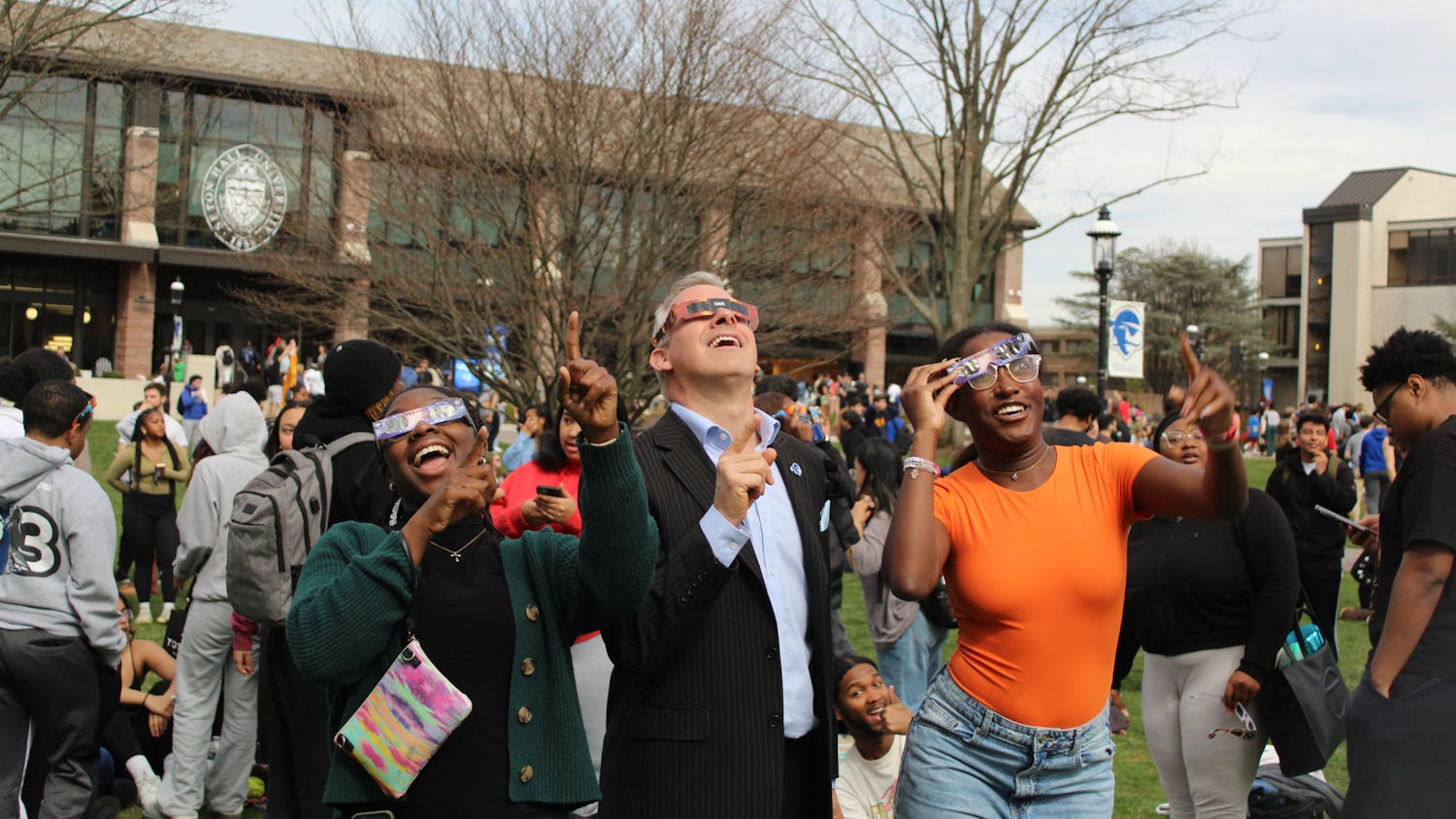Student Services hosted an online “panel on policing” last Thursday to discuss criminal justice and inequality in South Orange and beyond.
The event was the second part of a series of panels set up to discuss policing in the wake of the murder of George Floyd and included Seton Hall professors, an area police chief and South Orange Village President Sheena Collum, who discussed changes coming to the South Orange Police Department (SOPD).
“As we continue to grapple with unrest in our cities and towns, higher education institutions are in the middle of two major pandemics: COVID-19 and racial injustice,” said Associate Vice President of Student Services Dr. Monica Burnett, who moderated the panel. “As universities continue to respond to the threat of COVID-19, so too must higher education help lead society to overcome and condemn racism and violence.”
Dr. Thomas Shea, a former police officer and director of Seton Hall’s police graduate studies program, said conversation was essential to improving policing.
“The main problem I see in policing is that police don’t really talk to the community unless something negative is happening,” Shea said. “If [officers and community members] know each other, the chances of negative interactions are going to be de-escalated almost automatically.
“You can’t legislate better race relations,” he continued. “You can’t implement better race relations. It starts with a conversation.”
Quovella Spruill, chief of Franklin Township’s police department, spoke about her experience as a Black police officer and said police departments needed to diversify.
“We need the police,” Spruill said. “We have to expose women and minorities and other people to the law enforcement profession.”
Dr. Juan Rios, director of the Masters of Social Work program at Seton Hall, said unaddressed mental illness and collective trauma for both civilians and police officers need to be addressed.
“Law enforcement officers… live in traumatized bodies, and we know that the average police officer in the course of their career sees over six hundred traumatic experiences,” Rios said. “Is there a help-seeking culture that’s occurring within the police structure? That’s a good question we have to ask and emphasize.”
Rios has been working with the South Orange Village to implement new “de-escalation, anti-racist, cultural competency [and] empathy” trainings, according to Collum.
“Everybody at Seton Hall University: work with us to be partners on this,” Collum said. “Help us embed social work [into] law enforcement.”
Collum also touted the SOPD’s diversity, after seven new hires brought the ratio of white officers to officers of color to 51% white, 49% people of color.
Citing crime statistics, Collum called Essex County ‘a donut,’ with South Orange in the middle, seeing fewer crimes this year than neighboring municipalities like Newark, and she credited SOPD Chief Kyle Kroll with the low crime rate.
“Understand that our police department is a work in progress,” Collum said. “There is much work to do, but they’re working hard.”
Collum said she does not use the term ‘defund’ to refer to changes coming to the SOPD.
“I like to look at ‘augmentation,’” she said. “Naturally if you’re reducing calls for service to law enforcement, you’re going to reduce the budget, but let’s not start with the intention of making an adversarial relationship with law enforcement so that in order for us to succeed we have to take something away.”
In addition to calling for white residents to acknowledge their privilege and the SOPD to remove “bad actors,” Collum also called on the state to compile data on uses of force, breaking down the races of those involved.
South Orange does not have a public listing of the use of force complaints against SOPD, but a community presentation by the Village includes data on use of force from 2012 to 2018.
The presentation reports 82 uses of force in the seven-year period. About 77% of these incidents involved Black suspects. Black people made up about 29% of South Orange’s population at the 2010 census.
In 2017, NJ Advance Media published “The Force Report,” a list of all police brutality and use of force incidents for every municipality in New Jersey. The report includes over 43,000 incidents statewide between 2012 and 2016.
The report includes a “force rate,” a calculation of incidents per 1000 arrests, to compare rates of reported uses of force between departments.
SOPD is listed as having a force rate of 45.2, above the state average of 30.5. Nearby, Maplewood had a force rate of 111.
Burnett said a third panel on policing will take place on Nov. 10.
Daniel O’Connor can be reached at daniel.oconnor1@student.shu.edu. Find him on Twitter @itsDanOConnor.




